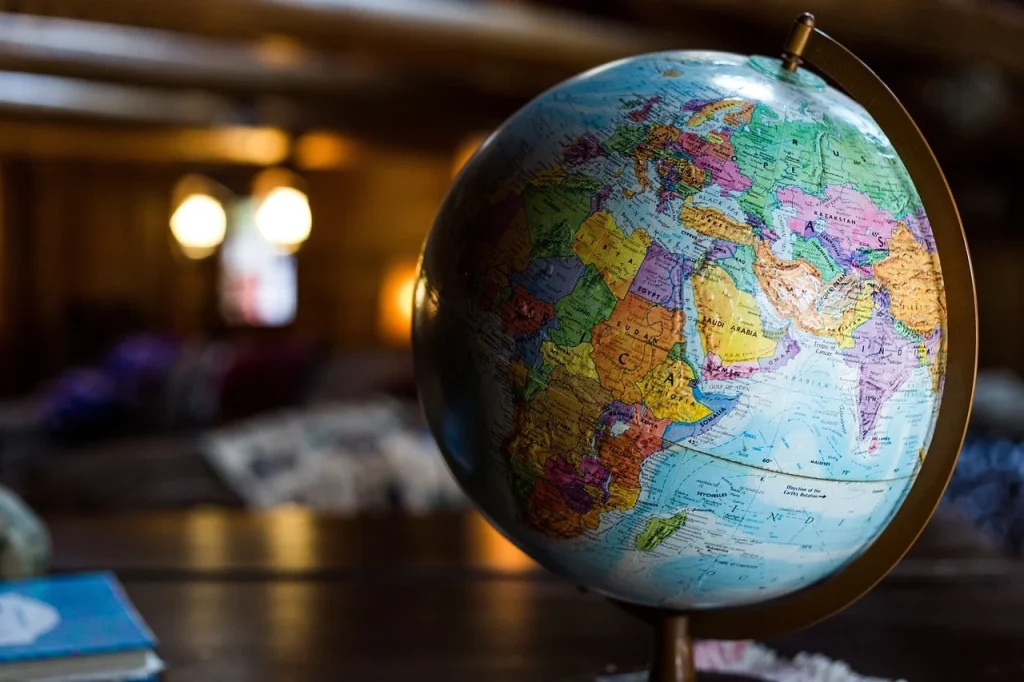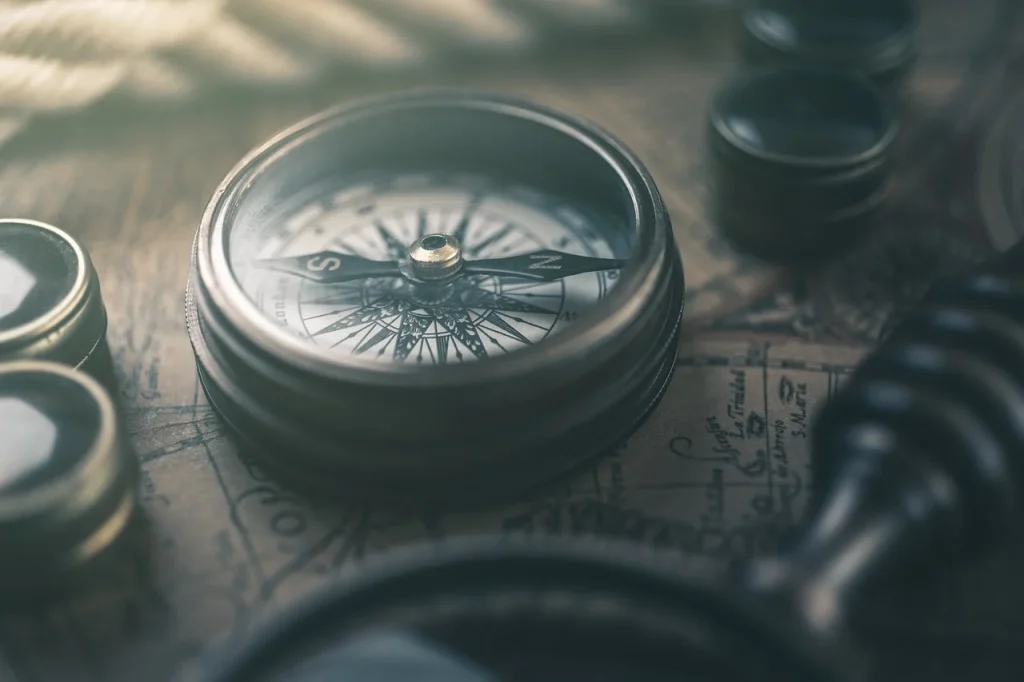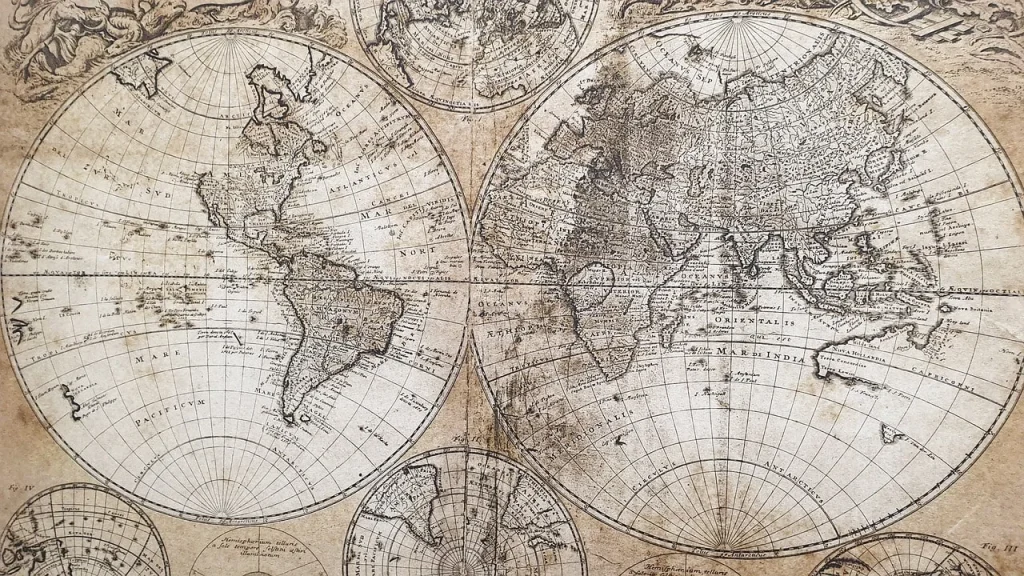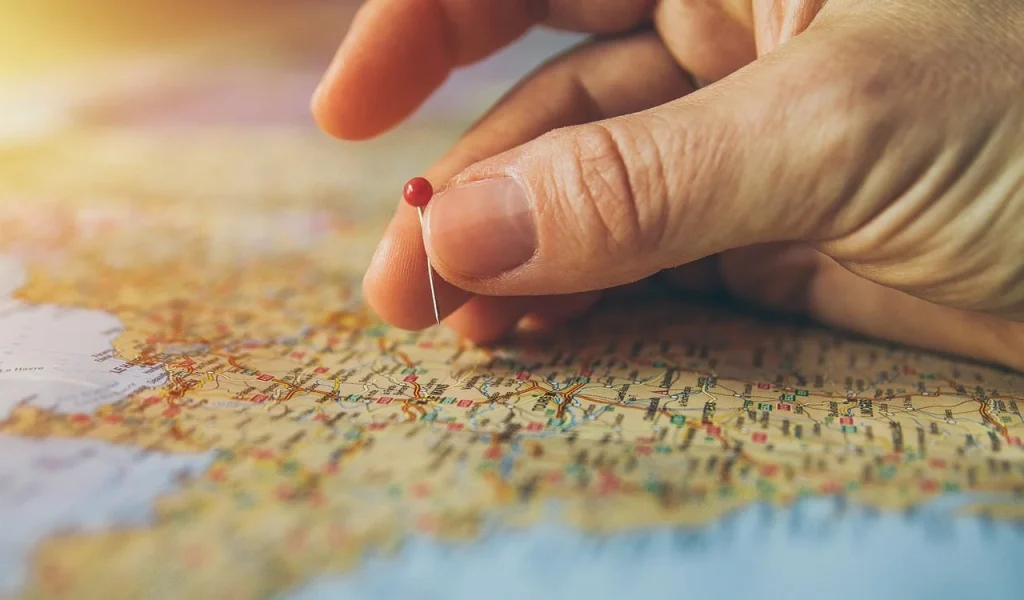Let’s play a game of geographical hide and seek with some astonishing facts from around our planet. Ever heard of a lake that’s pink? Yes, it exists, and no, the fish aren’t blushing!
We’ll explore quirks like this and more, from mountains that could give you a nosebleed to islands playing hopscotch across the ocean. Geography isn’t just about memorizing capitals; it’s about discovering the Earth’s secrets. Are you ready to find out what mysteries lie hidden in plain sight on our big, beautiful Earth?
Geography is the subject which holds the key to our future.
Michael Palin
Geography Facts
Let’s start our journey into the vast world of geography. Stay sharp and read carefully, as there’s a quiz at the end to test your mastery of the topic!
- The largest country in the world, Russia, covers more than one-eighth of the Earth’s inhabited land area.
- Lake Baikal in Siberia holds 20% of the world’s unfrozen freshwater, making it the deepest and oldest lake on Earth.
- Vatican City is the smallest independent state in the world by both area and population.
- The Dead Sea is currently 430.5 meters below sea level and is descending about 1 meter each year.
- Mount Everest grows about 4 mm higher each year due to tectonic movements.
- The shortest place name is ‘Å’ and it’s found both in Sweden and Norway.
- 90% of the world’s population lives in the Northern Hemisphere.
- The Andes is the longest mountain range on land and runs through seven countries in South America.
- Canada has the longest coastline in the world, stretching over 202,080 km.
- The Sahara Desert expands its boundaries by approximately 48 square kilometers annually.
- Lesotho, Vatican City, and San Marino are the only countries completely surrounded by one other country.
- Reno, Nevada is west of Los Angeles, California, despite the common misconception about their relative positions.
- Australia is wider than the moon. The moon’s diameter is about 3,474 km, while Australia’s width measures approximately 4,000 km.

- Due to plate tectonics, every year Hawaii moves approximately 7.5 cm closer to Japan.
- The longest place name still in use is Taumatawhakatangihangakoauauotamateaturipukakapi- kimaungahoronukupokaiwhenuakitanatahu in New Zealand.
- Brazil is named after a tree, not the other way around.
- The Amazon River once flowed west, but now it flows to the east into the Atlantic Ocean.
- Antarctica is the only continent without reptiles or snakes.
- The Mariana Trench is deeper than Mount Everest is tall.
- Greenland is the largest island in the world, and it’s covered by the only permanent ice sheet outside Antarctica.
- Despite its ice, Antarctica is technically classified as a desert because of its very low precipitation.
- Only three countries in the world don’t use the metric system: Liberia, Myanmar, and the United States.
- The country with the most neighboring countries is China, tied with Russia; each shares borders with 14 countries.
- Most of the world’s oxygen supply is produced by the ocean.
- There is a town in Canada called “Dildo,” and nobody knows the origin of its name.
- The shortest flight between two airports is from Westray to Papa Westray in Scotland and lasts just about two minutes.
- Istanbul, Turkey, is the only city in the world located on two continents: Europe and Asia.
- Nepal has the only national flag that is not rectangular or square-shaped.

- California’s San Andreas Fault moves about two inches each year and is visible from the moon.
- There are more than 1,500 active volcanoes worldwide, and about 500 have erupted in the historical record.
- Bangladesh has more rivers than any other country on Earth, with over 700 tributaries.
- Parts of Venezuela see almost 10,000 lightning strikes every night.
- Siberia accounts for about 77% of Russia’s land area but is home to just 27% of the country’s population.
- Winnipeg is one of the coldest cities in the world, with temperatures plummeting to as low as -45 degrees Celsius.
- There is an eternal flame in Australia that has been burning for more than 6,000 years due to natural gas leaks.
- Spain is considered the most mountainous country in Europe, after Switzerland.
- Monaco is smaller than Central Park in New York City.
- English is not an official language in the United States; the country has no designated official language.

- The Amazon Rainforest produces more than 20% of the world’s oxygen.
- The Great Barrier Reef is the largest living structure on Earth and can be seen from space.
- The continent of Africa is the only one to stretch from the northern temperate to the southern temperate zones.
- The Trans-Siberian Railway spans almost the entire breadth of Russia from west to east, covering over 9,289 kilometers.
- Angel Falls in Venezuela is the highest uninterrupted waterfall in the world, with a drop of 979 meters.
- A single pancake ice formation can grow up to 3 meters (10 feet) in diameter in the Antarctic waters.
- Indonesia is made up of more than 17,000 islands, making it the world’s largest archipelago by number of islands.
- There’s a persistent myth that you can see the Great Wall of China from the moon; it’s actually not visible to the naked eye from space.
- More than half of the world’s geysers are located in Yellowstone National Park.
- Libya is covered 99% by desert, making it one of the most arid places on Earth.
- The world’s longest traffic jam occurred in Beijing in August 2010; it lasted for more than 10 days and was 100 km long.
- Aspen, Colorado, was the first city to determine its precise location using GPS technology.
Geography Myths

Now that we’ve explored the facts, let’s take a moment to separate the truth from the myth. In the next section, we will debunk some common misconceptions and provide a clearer understanding of our world.
- The Great Wall of China is Visible from Space
It is often claimed that the Great Wall can be seen with the naked eye from space. However, this is not true. Astronauts confirm that many human-made objects are not visible from the Earth’s orbit without aid. - Africa is Mostly Desert
The diverse continent of Africa is commonly misconceived to be predominantly desert. In reality, its landscapes vary greatly and include rainforests, mountains, and savannas, with deserts making up only a small part of its total area. - Antarctica is Only Ice
While it’s widely believed that Antarctica is just a massive block of ice, it actually consists of mountains, valleys, and even active volcanoes beneath its ice cover, which are rarely acknowledged. - The Amazon Rainforest Produces 20% of Earth’s Oxygen
This statement is often repeated but oversimplified. The Amazon’s net contribution to the Earth’s oxygen is closer to zero, as the oxygen produced by the forest is approximately consumed by the forest itself through respiration and decomposition. - There Are Seven Continents
Technically, Europe and Asia are one continuous landmass known as Eurasia, making the distinction between them a cultural and historical one rather than a clear geographical demarcation.
Geography Quotes

Let’s continue with some quotes. Below, you will find a list of my favorites. Feel free to share yours in the comments so I can add them to the list.
Without geography, you’re nowhere.
Jimmy Buffett
Singer-songwriter Jimmy Buffett emphasizes the importance of geography in giving context and meaning to our existence.
Geography prepares for the world of work – geographers, with their skills of analysis are highly employable!
Michael Palin
Michael Palin once again speaks to the practical value of geography, noting how the analytical skills it teaches are highly valued in the job market.
Geography is just physics slowed down, with a couple of trees stuck in it.
Terry Pratchett
Fantasy author Terry Pratchett offers a humorous take, suggesting geography is a simpler, more scenic form of physics.
The study of geography is about more than just memorizing places on a map. It’s about understanding the complexity of our world.
Barack Obama
Former U.S. President Barack Obama describes geography as a discipline that deepens our understanding of the world’s intricacies beyond mere cartography.
The geographical pilgrimage is the symbolic acting out of an inner journey. The inner journey is the interpolation of the meanings and signs of the outer pilgrimage. One can have one without the other. It is best to have both.
Thomas Merton
Thomas Merton, a Trappist monk and thinker, reflects on how physical travel in geography can mirror and enhance our personal, internal journeys.
Geography FAQ

Before you challenge yourself with the quiz, let’s read some common questions in the FAQ section first.
- What is geography in simple words?
It is the study of places and the relationships between people and their environments. It explores both the physical properties of Earth’s surface and the human societies spread across it. - What are the different types of geography?
There are two main types of geography: physical geography, which deals with Earth’s natural features and processes, and human geography, which focuses on the study of human activities and their impact on the environment. - Why is studying geography important?
Studying geography helps us understand our world better, from natural phenomena like earthquakes and weather patterns to human aspects such as urban planning and cultural development. It also enhances our ability to make informed decisions about issues affecting our planet and our lives. - How do maps help in the study of geography?
Maps are essential tools in geography; they provide a visual representation of both physical and human-made features of a landscape. They help us to analyze spatial information and understand complex data in a clear and accessible way. - Can geography influence history and culture?
Yes, it significantly influences history and culture. The natural landscape and climate of a region can determine its agriculture, affect its economic development, and shape the lifestyle and customs of its inhabitants.
Geography Trivia

Welcome to the ultimate geography quiz! Beware, if you don’t get any questions right, you might just find yourself lost in a desert without a map!
Conclusion
Hopefully, this article has expanded your view beyond mere locations on a map. Geography is dynamic and alive, influencing how we live, where we travel, and the stories we tell.
As you go about your daily life, consider how the geographical features around you influence your choices and perceptions. Geography is everywhere, waiting to be appreciated and understood. Till next time, stay curious and explore more. Cheers.
2 Sources Used For This Article

